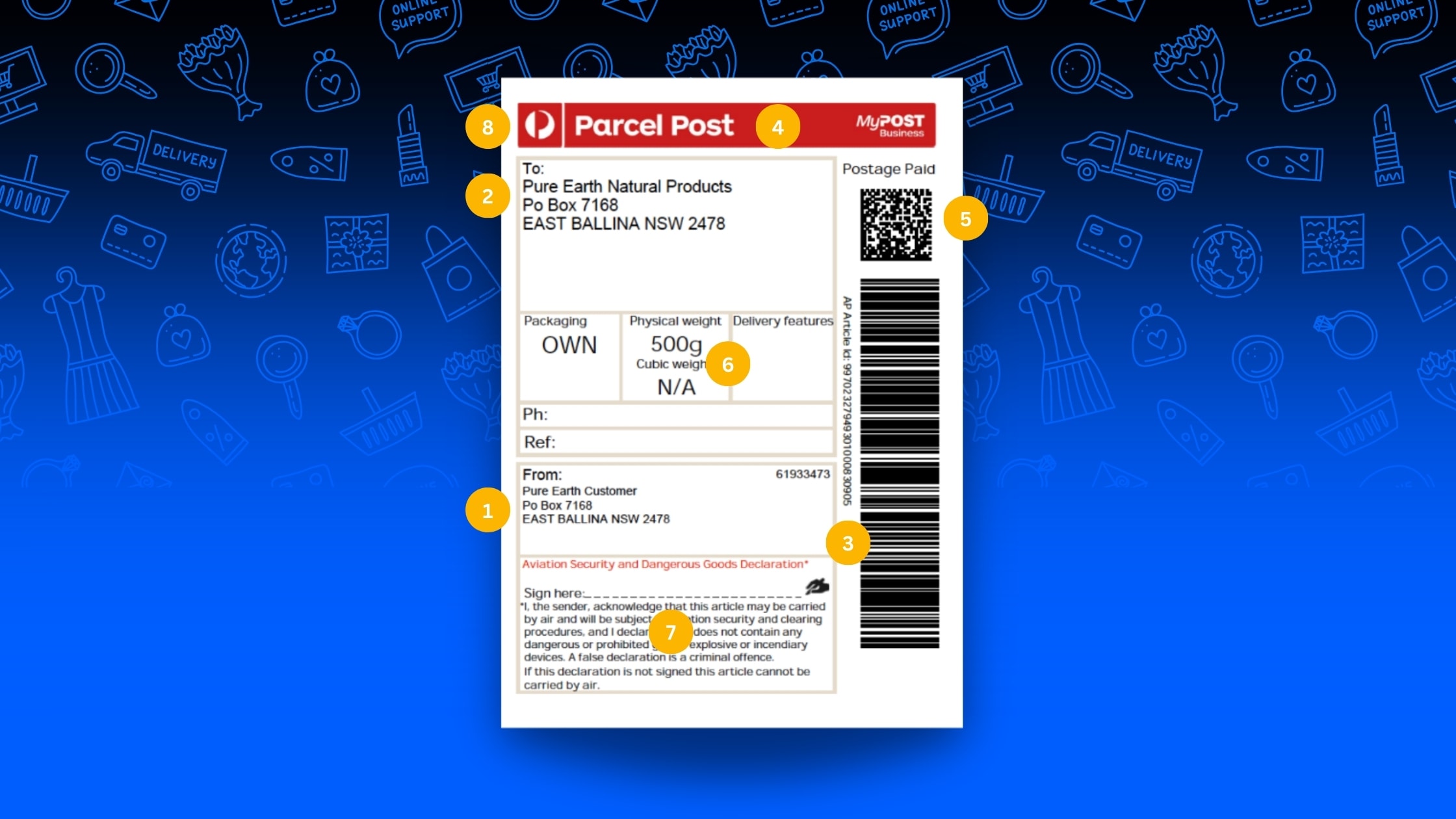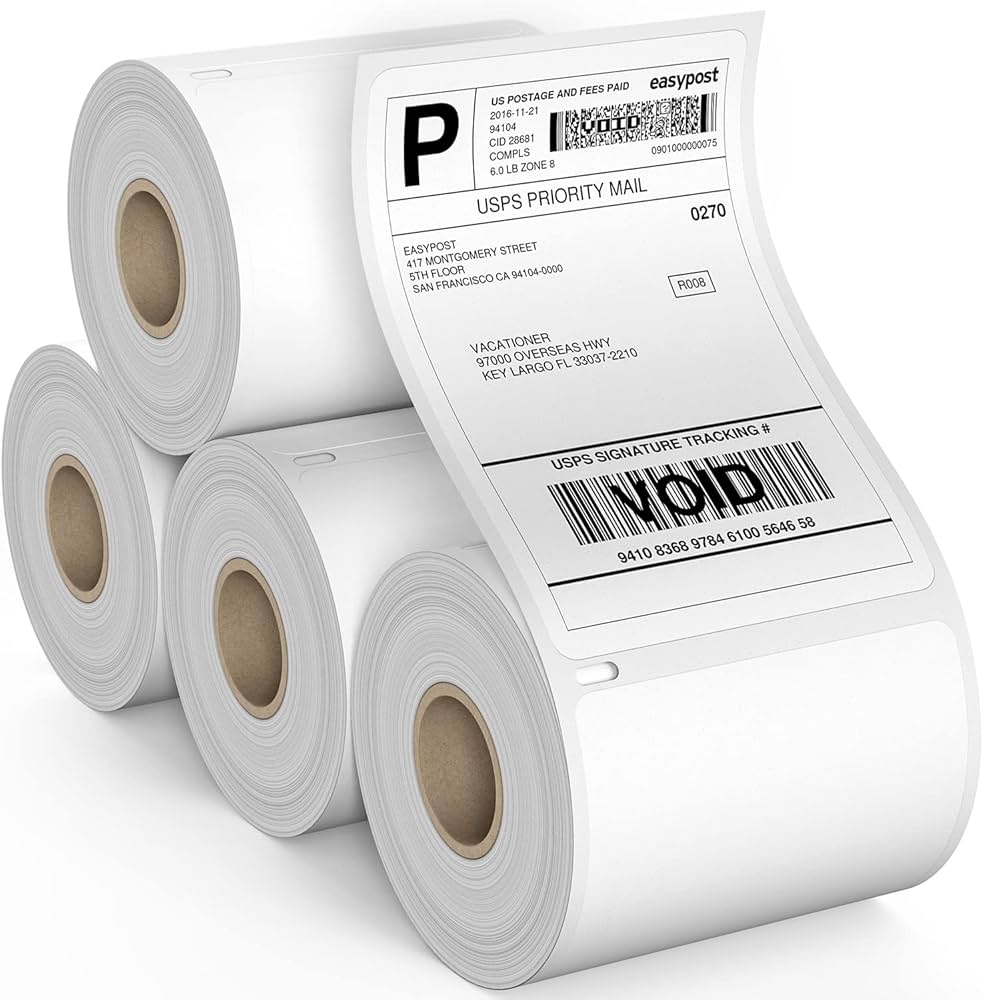What Are Shipping Labels: How They Work And How to Use Them Effectively
21 Nov 2024
|by diadmin

What are shipping labels?
When it comes to shipping, the smallest details can make a big difference in ensuring packages reach their destination safely, quickly, and efficiently. If you’ve ever wondered, “What are shipping labels?” or why they’re so crucial to the shipping process, you’re in the right place. Shipping labels are far more than just pieces of paper with printed addresses—they’re essential tools in logistics that provide critical information to carriers, post offices, and businesses alike.
In this guide, we’ll explore everything you need to know about shipping labels, from what they are and why they’re important to how shipping labels work, create, and print them. You’ll gain a solid understanding of different types of shipping labels, how to save time and money with the right tools, and how to integrate shipping label creation into your order fulfillment workflow. Let’s dive in.
- What is a Shipping Label?
- Importance of Shipping Labels in the Shipping Process
- Creating a Shipping Label
- Best Practices for Shipping Labels
- Common Mistakes to Avoid
- Label Information: Key Parts of a Shipping Label
- Optimizing Your Shipping Process
- Conclusion
- FAQs For shipping Labels
What is a Shipping Label?
At their core, shipping labels are essential identifiers for packages. Address labels, on the other hand, are designed to display the recipient’s name and address for easy identification when attached to packages or envelopes. Each label contains various important information, such as the sender name, recipient’s address, tracking number, and package weight. But they also contain additional data, like shipping class, carrier information, and barcodes, which help move packages quickly and efficiently through the logistics network.
Imagine a shipping label as a passport for your package, containing the necessary details to ensure it reaches its end destination without delay. Shipping labels help reduce errors in the shipping process but also improve efficiency by allowing packages to be sorted and delivered with minimal handling. They’re a vital part of the order fulfillment process for businesses of all sizes, from small online stores to major ecommerce platforms.
Shipping labels aren’t one-size-fits-all either. There are different shipping labels depending on the package’s requirements, the shipping method, and even the destination. For example, a USPS shipping label may look different from one used for international shipments with Australia Post. Each label serves as a tailored guide for handling that specific package.
Understanding the Shipping Process
The shipping process involves several critical steps that ensure packages are delivered efficiently and effectively. Understanding this process is crucial for businesses to manage their logistics and fulfillment operations seamlessly. Here’s an overview of the shipping process:
- Order Receipt: The journey begins when a business receives an order from a customer. This step involves capturing all necessary details, including the customer’s shipping address and order specifics.
- Order Processing: Next, the business processes the order. This includes verifying the customer’s information, checking inventory to ensure the item is in stock, and preparing the package for shipping. Accuracy at this stage is vital to avoid delays and errors.
- Label Creation: Creating a shipping label is a pivotal step. The label includes essential information such as the customer’s address, package weight, and chosen shipping method. This data is crucial for calculating shipping costs and ensuring the package is handled correctly.
- Package Preparation: The package is then prepared for shipping. This involves securely packing the item, attaching the shipping label, and sealing the package to protect its contents during transit.
- Shipping: The package is handed over to a carrier, such as USPS, UPS, or FedEx. The carrier is responsible for transporting the package from the business to the customer.
- Tracking: Throughout the shipping process, the package is tracked to ensure it reaches the customer on time. Tracking information is often shared with the customer, providing transparency and peace of mind.
- Delivery: Finally, the package is delivered to the customer’s doorstep. A successful delivery completes the shipping process, resulting in a satisfied customer.
By understanding each step of the shipping process, businesses can optimize their logistics, reduce errors, and ensure timely deliveries.
Importance of Shipping Labels in the Shipping Process
Shipping labels are crucial for getting packages from point A to point B accurately and on time. They provide carriers with all the details needed—from the start destination (like a warehouse or fulfillment center) to the end destination (your customer’s doorstep). A correct shipping label does more than just guide a package; it ensures a smooth, reliable delivery experience.
When shipping labels are missing or incorrect, packages risk being:
- Delayed in transit: Slowing down your delivery times and frustrating customers.
- Misdelivered to the wrong address: Leading to a costly and time-consuming correction process.
- Lost completely: Resulting in disappointed customers and potential loss of future business.
These issues can have a ripple effect on your brand, potentially causing:
- Negative customer reviews on websites or marketplaces
- Public complaints on social media, damaging your reputation
- Customer loyalty loss as buyers look for more reliable options
Shipping labels may seem small, but they play a huge role in ensuring customers get a positive experience and see your brand as trustworthy and efficient. In the world of ecommerce, a simple label can be the difference between a happy, repeat customer and a lost sale.

Creating a Shipping Label
Creating shipping labels doesn’t have to be complicated. With online tools and shipping software, you can easily create shipping labels and simplify your order fulfillment process. Start by gathering essential info: the recipient’s address, sender name, package weight, and dimensions. This data is crucial for calculating shipping costs and ensuring the package is properly handled.
Creating your own shipping labels can save time and money, and may also secure additional discounts with couriers.
Using Shipping Label Templates
Shipping label templates are a quick way to ensure you cover all necessary details, from addresses to tracking numbers. Many shipping platforms can automatically create labels tailored to different carriers, perfect for high-volume or international shipments.
Printing Shipping Labels
After creating labels, print shipping labels either at home or in-store. Smaller businesses can use label sheets with a standard printer, while high-volume operations may benefit from a dedicated label printing machine. To protect labels, cover them with clear tape to prevent smudging.
Now that your labels are ready, let’s look at what specific information each shipping label displays and why it matters.
Best Practices for Shipping Labels
Getting shipping labels right is key to smooth deliveries and happy customers. Here’s how to ensure your labels work every time:
Effective labeling is crucial for shipping packages, as it enhances safety and improves the customer experience.
1. Double-Check Key Details
- Verify the recipient’s address and sender name—even small typos can cause delays.
- Confirm package details, like weight and dimensions, to avoid unexpected shipping costs.
- Accuracy saves time, reduces returns, and keeps customers satisfied.
2. Use Durable Labels and Protect Them
- Print on high-quality label sheets or use a dedicated label printer for crisp, clear labels.
- Cover labels with clear tape to protect them from moisture, smudging, or tearing during transit.
- Well-protected labels ensure tracking numbers and addresses stay readable.
3. Leverage Shipping Software
- Shipping software can automatically pull address details from your online store and generate labels quickly.
- Automation reduces human error and speeds up the shipping process, especially during busy seasons.
- Look for shipping platforms that support your preferred carriers for easy integration.
4. Include Tracking Information for Customers
- Always add a tracking number to reassure customers and allow you to monitor each package.
- Tracking is especially helpful for international shipments where delays are more common.
- It builds customer trust by keeping them informed from start to finish.
5. Choose the Right Shipping Method and Class
- Match the shipping method to the package’s urgency—standard for most orders, expedited for time-sensitive ones.
- Selecting the right shipping class keeps costs down while meeting delivery expectations.
- Consider customer needs and costs to find the best option.
6. Standardize Labels with Templates
- Use shipping label templates to keep formats consistent and compliant with carrier standards.
- Templates simplify formatting, prevent scanning errors, and help maintain a smooth order fulfillment process.
Common Mistakes to Avoid
Creating shipping labels may seem simple, but a few common pitfalls can lead to delays, added costs, and unhappy customers. By knowing what to avoid, you can streamline your shipping process and keep deliveries smooth and on schedule. Here are some top mistakes to watch out for:
- Incorrect or incomplete address information
- Missing tracking information
- Not using the right shipping label template
- Skipping label protection
- Choosing the wrong shipping method
Avoiding these mistakes can help your packages reach customers accurately and on time, ensuring a seamless order fulfillment experience.
Label Information: Key Parts of a Shipping Label

| No. | Label Part | Description |
|---|---|---|
| 1 | Sender’s Information | Displays the sender name and address (start destination) to indicate where the package originates. |
| 2 | Recipient’s Information | Includes the recipient’s name and address (end destination), detailing where the package is to be delivered. |
| 3 | Tracking Number | A unique number that allows for real-time tracking of the package by both the carrier and customer, enhancing transparency. |
| 4 | Shipping Class & Service | Specifies the shipping method and class (e.g., ground, two-day, overnight), which determines priority in handling and speed of delivery. |
| 5 | Barcodes & QR Codes | Scannable codes that carriers use to quickly access package information, enabling efficient routing, tracking, and sorting. |
| 6 | Package Weight & Dimensions | Details about the package weight and size, help calculate shipping costs and ensure proper handling requirements are met. |
| 7 | Special Instructions | Includes handling notes such as hazardous materials warnings, “fragile” indicators, or instructions specific to international shipping needs. |
| 8 | Carrier and Service Logos | Logos for major carriers like USPS, FedEx, or UPS, helping the package move through the correct service network. |
Special Considerations for Shipping Labels
Shipping labels are a critical component of the shipping process, and several special considerations must be taken into account to ensure their effectiveness:
- Accuracy: The information on shipping labels must be accurate to ensure packages are delivered to the correct address. Even minor errors can lead to significant delays or misdeliveries, impacting customer satisfaction.
- Legibility: Shipping labels must be legible to ensure carriers can read the information easily. Clear, readable labels help prevent scanning errors and ensure that packages are routed correctly through the logistics network.
- Durability: Shipping labels must be durable enough to withstand the rigors of the shipping process and various environmental conditions. Labels should remain intact and readable despite exposure to heat, cold, moisture, and handling.
- Compliance: Shipping labels must comply with carrier regulations and industry standards. Different carriers may have specific requirements for label formats, barcodes, and information placement, so it’s essential to adhere to these guidelines to avoid issues during transit.
- Security: Shipping labels must be secure to prevent tampering or alteration. Secure labels help protect the integrity of the package and ensure that it reaches the intended recipient without interference.
By paying attention to these considerations, businesses can enhance the reliability and efficiency of their shipping operations.

Thermal Shipping Labels
Thermal shipping labels are a popular choice for businesses due to their efficiency and cost-effectiveness. Here are some benefits of using thermal shipping labels:
- Cost-Effective: Thermal shipping labels are a cost-effective solution for businesses that need to print large quantities of labels. They eliminate the need for ink or toner, reducing ongoing printing costs.
- Efficient: Thermal shipping labels are printed quickly and efficiently, which saves time and increases productivity. This is particularly beneficial for high-volume shipping operations where speed is essential.
- Durable: Thermal shipping labels are durable and can withstand various environmental conditions, such as heat, cold, and moisture. This durability ensures that labels remain intact and readable throughout the shipping process.
- Secure: Thermal shipping labels are secure and can prevent tampering or alteration. The printing process creates a permanent image that is resistant to smudging and fading, enhancing the security of the label.
- Compliant: Thermal shipping labels can comply with carrier regulations and industry standards. They can be easily formatted to meet the specific requirements of major carriers, ensuring smooth processing and delivery.
By leveraging the benefits of thermal shipping labels, businesses can improve their shipping efficiency, reduce costs, and ensure that packages are delivered accurately and securely.
Optimizing Your Shipping Process
Efficient shipping is essential for keeping customers happy and reducing costs. Here are some key ways to streamline your logistics and optimize your shipping process:
Leverage Shipping Software
Using shipping software can simplify label creation, automate tracking updates, and reduce human errors. Automated tools can pull information directly from your online store to generate shipping labels quickly, saving you valuable time.
Partner with a Fulfillment Provider
For growing businesses, working with a fulfillment provider can help handle high volumes of orders efficiently. Fulfillment partners manage storage, packing, and shipping, allowing you to focus on other parts of your business while potentially reducing shipping costs.
Use Shipping Label Templates
Standardizing your labels with shipping label templates ensures that all packages include the correct information in a consistent format. Templates improve accuracy, reduce errors, and make it easy to meet the specific requirements of major carriers like USPS or FedEx.
Conclusion
Optimizing your shipping process is key to running a smooth, cost-effective ecommerce operation that keeps customers satisfied. From using shipping software to reduce errors and save time, to partnering with fulfillment providers and using standardized shipping label templates for consistency, these strategies can make a big difference in how efficiently you ship your products. With the right tools and practices, you can streamline logistics, reduce costs, and ensure that every order reaches its destination on time. As your business scales, optimizing each step of your shipping process will help you maintain quality service and stay competitive.
FAQs For shipping Labels
1. What are shipping labels, and why are they important?
Shipping labels are essential markers that display key information needed for carriers to deliver packages accurately and efficiently. They include the sender and recipient addresses, tracking number, package weight, and any special handling instructions. Accurate shipping labels prevent delays, misdeliveries, and customer dissatisfaction by ensuring packages arrive at the correct destination.
2. How can shipping software help streamline my shipping process?
Shipping software automates several steps in the shipping process, from creating and printing labels to tracking shipments and updating customers. It can pull order information directly from your sales platform, reducing manual data entry and errors. By using shipping software, businesses can manage higher order volumes with ease, saving time and improving accuracy.
3. What’s the benefit of using shipping label templates?
Shipping label templates provide a consistent format that includes all necessary details for carriers, like the recipient’s address and tracking information. They’re designed to meet the specifications of major carriers like Aramex and Auspost, minimizing errors and improving label readability. For businesses, templates make it easy to quickly generate labels that meet carrier requirements every time.
4. Is partnering with a fulfillment provider cost-effective for small businesses?
Yes, partnering with a fulfillment provider can be cost-effective, especially as order volume increases. Fulfillment providers handle storage, packing, and shipping, which can reduce labor costs, shipping expenses, and the need for warehouse space. For small businesses, this partnership allows for scalability and frees up resources to focus on growth.
5. How can I reduce shipping costs without compromising delivery speed?
To reduce shipping costs while maintaining delivery speed, consider using shipping software that offers rate comparisons among major carriers. You can also negotiate rates with carriers if you ship in high volumes, and choose shipping classes that balance speed with affordability. Optimizing package sizes and weights can also help lower costs without impacting delivery times.